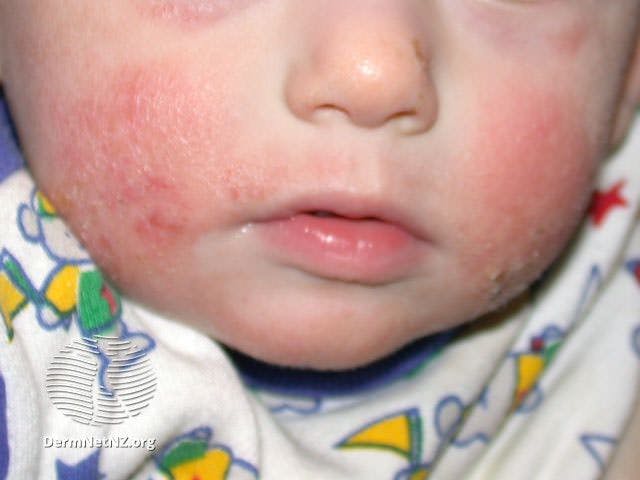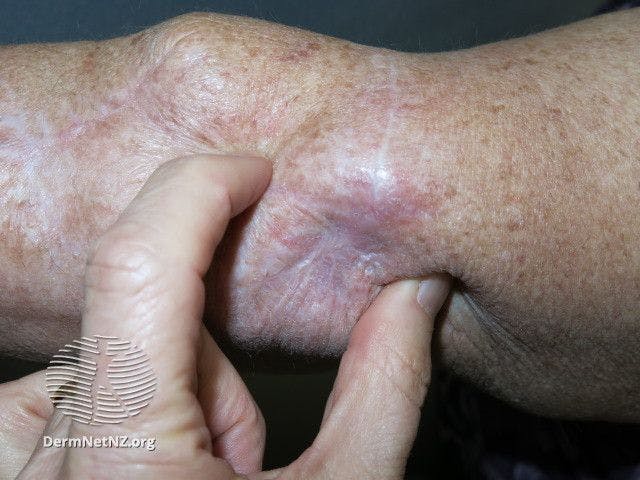- Acne
- Actinic Keratosis
- Aesthetics
- Alopecia
- Atopic Dermatitis
- Buy-and-Bill
- COVID-19
- Case-Based Roundtable
- Chronic Hand Eczema
- Drug Watch
- Eczema
- General Dermatology
- Hidradenitis Suppurativa
- Melasma
- NP and PA
- Pediatric Dermatology
- Pigmentary Disorders
- Practice Management
- Precision Medicine and Biologics
- Prurigo Nodularis
- Psoriasis
- Psoriatic Arthritis
- Rare Disease
- Rosacea
- Skin Cancer
- Vitiligo
- Wound Care
News
Article
Dermatology Times
Journal Digest: October 17
Author(s):
This week’s collection of the latest dermatologic studies covers understanding the role of the skin microbiome in AD treatment, management of human hair follicle microbiome by a synthetic odorant, efficacy of tralokinumab in AD treatment, and considerations in geriatric dermatopathology.

Experimental Dermatology: Recent Advances in Understanding the Role of the Skin Microbiome in the Treatment of Atopic Dermatitis
Kim et al’s review explores the skin microbiome's influence on shaping and enhancing the skin's barrier functions, as well as its interactions with the host and their roles in skin diseases, particularly atopic dermatitis (AD). The study highlights how dysbiosis can lead to various skin conditions, including AD, seborrheic dermatitis, acne, alopecia areata, psoriasis, and skin cancer. Potential therapeutic approaches that target the skin microbiome, such as probiotics, phage therapy, endolysins, small molecules, and peptides, may be effective in improving barrier function and various skin conditions. “Targeted therapies that restore the skin microbiome of patients with AD to a healthy state, promote the recovery of symbiotic bacteria, and reduce the overgrowth of AD causative factors are needed,” concluded the authors.
Journal of Dermatologic Science: Management of the Human Hair Follicle Microbiome by a Synthetic Odorant
Edelkamp et al review the impact of a common cosmetic odorant on the human scalp hair follicle (HF) microbiome. By activating olfactory receptor family 2 subfamily AT member 4 (OR2AT4) with the synthetic sandalwood-like odorant Sandalore, the researchers increased the expression of the antimicrobial peptide dermcidin (DCD) within HFs. This led to beneficial changes in the HF microbiome composition, favoring bacteria like Staphylococcus epidermidis and Malassezia restricta over S. aureus and M. globosa, while exhibiting antimicrobial activity against Cutibacterium acnes. These findings suggest that cosmetic odorants, when used strategically, could serve as adjuvant therapies for managing folliculitis and hair diseases associated with dysbiosis, offering a new avenue for dermatological treatments.
American Journal of Clinical Dermatology: Tralokinumab Provides Clinically Meaningful Responses at Week 16 in Adults with Moderate-to-Severe Atopic Dermatitis Who Do Not Achieve IGA 0/1
Simpson et al investigated the impact of tralokinumab for patients with moderate-to-severe atopic dermatitis (AD), who did not achieve clear/almost clear skin (IGA 0/1) after 16 weeks of treatment. By analyzing data from 2 phase 3 trials, the investigators found that patients who received tralokinumab exhibited significant improvements in various clinically meaningful parameters compared to those who received a placebo. These parameters included a 50% or greater reduction in the Eczema Area and Severity Index, a 3-point or greater improvement in itch intensity, and a 4-point or greater improvement in quality of life. These findings suggest that tralokinumab can provide meaningful benefits to patients with AD beyond clear skin, emphasizing the importance of a multidimensional assessment in AD treatment trials.
International Journal of Dermatopathology: Considerations in Geriatric Dermatopathology
Brent et al’s in-depth study discusses critical considerations and ethical aspects of specimen collection and reporting in dermatopathology, particularly when dealing with elderly patients. The process of obtaining skin biopsy specimens involves various steps, from collection to final reporting. Key considerations to remember include biopsy site selection, obtaining adequate tissue, proper specimen handling, providing detailed clinical information, an accurate pathology report, ethical considerations regarding life expectancy and reasonable risks, histopathologic changes associated with aging, common interpretation pitfalls, associated skin findings in Parkinson’s disease, and pruritus of the elderly. Overall, this study emphasizes the need for careful and comprehensive assessment in dermatopathology, especially when dealing with elderly patients, and highlights ethical considerations in patient care and communication.
What new studies are most important to you? Share with us by emailing our team at DTEditor@mmhgroup.com.

Newsletter
Like what you’re reading? Subscribe to Dermatology Times for weekly updates on therapies, innovations, and real-world practice tips.


























